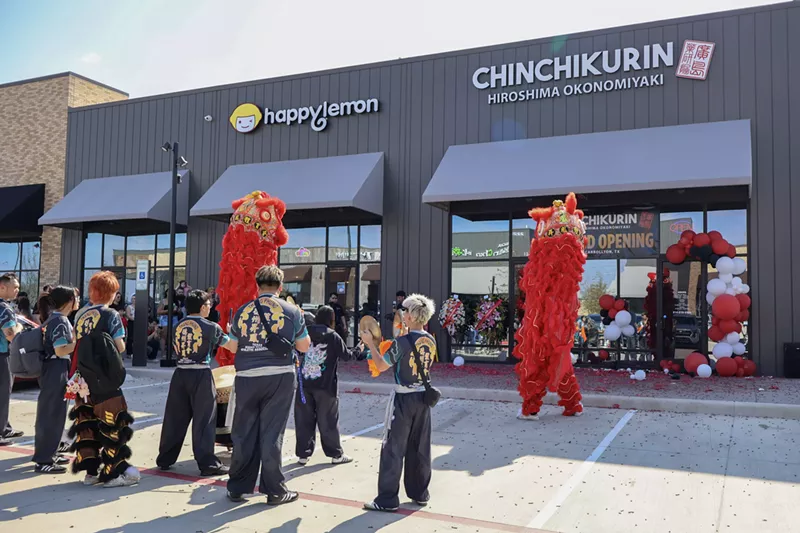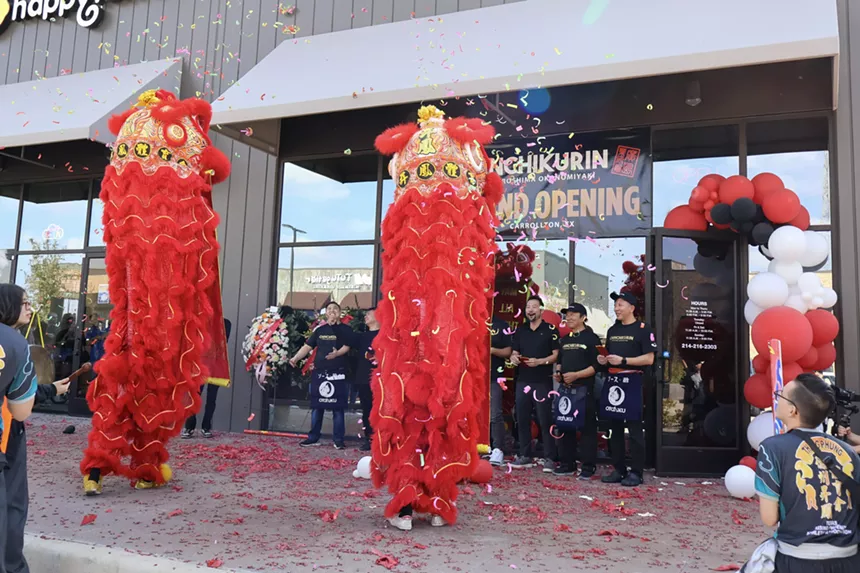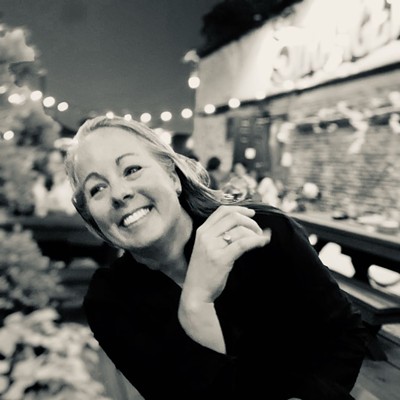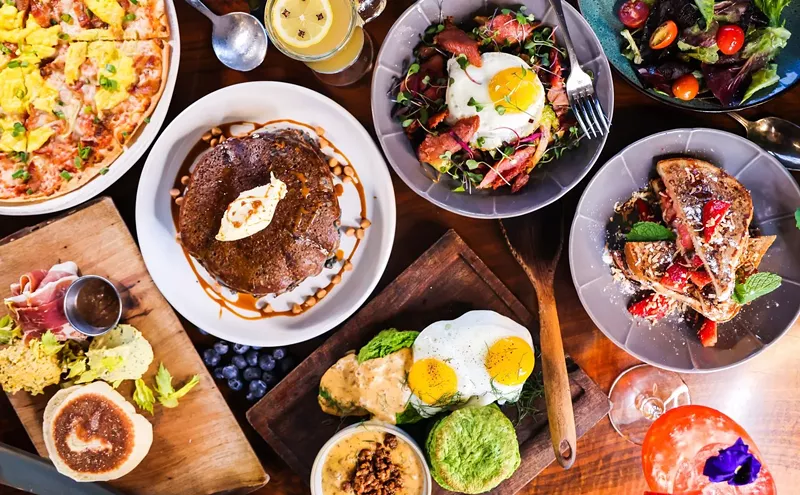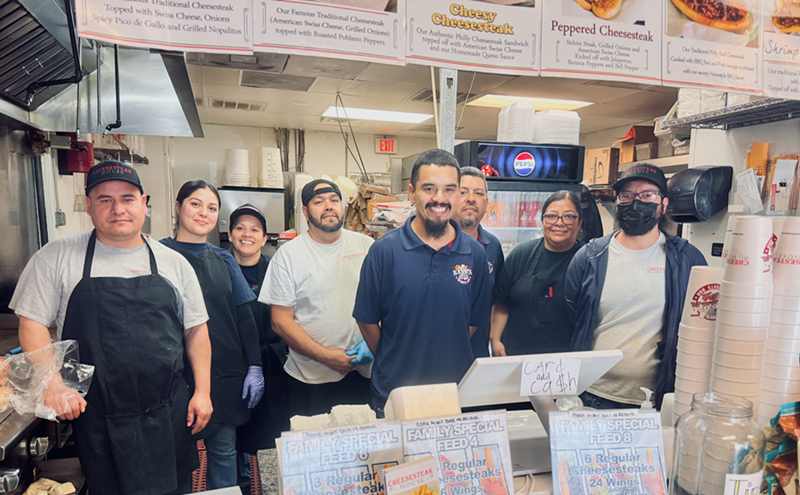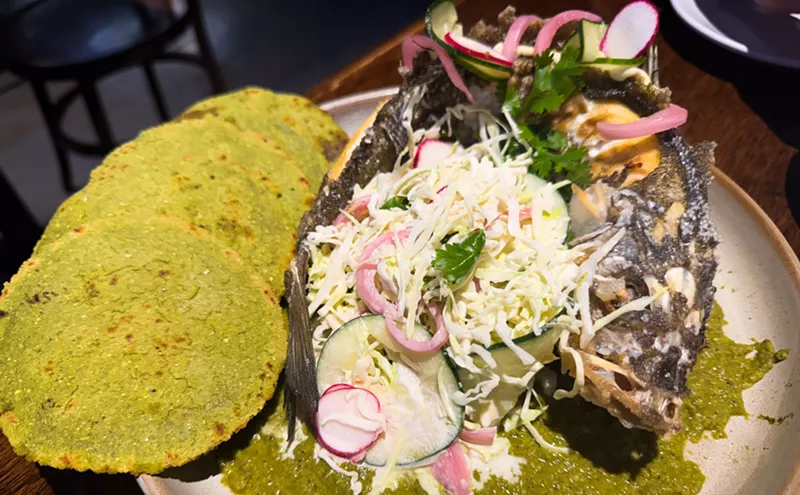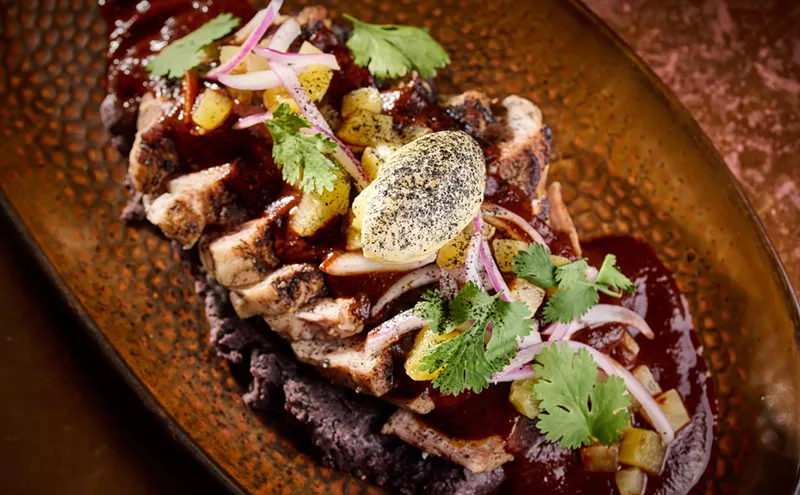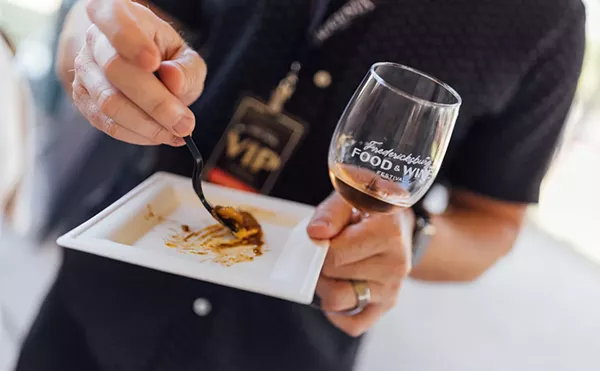Dat Nguyen brought the concept to Carrollton with a grand opening that included a drum show and a traditional dragon dance meant to bring good luck and fortune.
“I love it, it's amazing, but also chaotic at the same time,” Nguyen said at the opening. “But it's so fun though, you know, it makes life fun.”
Nguyen played a major role in bringing okonomiyaki to Carrollton — and all of North Texas, for that matter. It was a long time coming, though. In Japan, he tried both Osaka-style and Hiroshima-style okonomiyaki, and the latter, with its layers of flavor and signature Hiroshima sauce, became his favorite. Once he returned to Dallas, he discovered there was an opportunity to bring the cuisine here.
“I travel to Japan a lot because I love the country, I love all the foods and pretty much everything,” Nguyen says. “When I flew back to Dallas, there were no restaurants that served that dish. I found out LA has three locations that serve it, so I went there and tried it out, and I loved it. I reached out to someone to see if I could franchise it, we got in contact, and they allowed us to do that.”
No other restaurant in the area is dedicated to nor serves Hiroshima-style okonomiyaki. After living in the area for 14 years, Nguyen knew foodies would appreciate the style of cuisine.
“People love Japanese cuisine, but the main ones are ramen and sushi, so this brings a brand new dish to not just Dallas but Texas,” Nguyen says. “There's only two states now that have this specific dish. So it brings more variety for people to try and a good hangout spot to chat with your friends and have a nice meal.”
About Okonomiyaki
Okonomiyaki comes from the words ‘okonomi’ and ‘yaki,’ which mean ‘what you like’ and ‘grilled,’ respectively. Hiroshima-style okonomiyaki usually consists of 11 layers of different types of vegetables, protein, noodles and spices. The signature sweet and sour Otafuku sauce brings each layer together. The dish is cooked on a flat iron, or teppan, grill.Okonomiyaki developed from a pre-war snack called issen yoshoku, which then became a staple in Hiroshima and is now very representative of the region.
“This is literally the true soul food of Hiroshima,” says Robert Hasegawa, senior strategy director for Chinchikurin North America. “It's got historical significance since World War II. This was the type of food that kind of evolved from another childhood dish, then evolved into the Hiroshima-style okonomiyaki.”
Hasegawa says Kawakami and Muratake want to continue sharing the Hiroshima okonomiyaki food culture. He says they are proud to represent Hiroshima through Chinchikurin.
“Hiroshima has had a rough history, but now they're a thriving city,” Hasegawa says. “The fact that they're able to spread this culture, this true soul food culture, globally, I don't think they can express how happy they are that it's able to thrive in America.”

